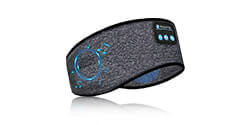What is UV400?
May 05, 2023 Sherry
UV400 is an ultraviolet (UV) protection standard, which means that the lens can filter out ultraviolet rays with a wavelength of less than 400 nanometers. 400 nanometers is a key point in the wavelength of ultraviolet rays, and it is also the maximum wavelength that can be recognized by the human eye, so filtering out ultraviolet rays with a wavelength of less than 400 nanometers can effectively protect the eyes from ultraviolet rays.
Before the UV400 standard, the common UV protection standards were UV 380, UV 400, UV 500, etc., among which UV 380 means that the lens can filter out ultraviolet rays with a wavelength of less than 380 nanometers, while UV 500 means that the lens can filter out ultraviolet rays with a wavelength of less than 500 nanometers .

Importance of UV400
Ultraviolet rays are a kind of harmful radiation, and long-term exposure to ultraviolet rays can cause various eye diseases, such as cataracts, eye diseases, etc. The lens can filter out ultraviolet rays with a wavelength of less than 400 nanometers, which can effectively prevent the occurrence of these diseases. Therefore, it is very important to choose sunglasses or myopia glasses with UV400 standard.In addition, not only sunglasses and myopia glasses, but also other types of glasses, such as protective glasses, goggles, etc., also need to take into account the UV400 protection standard. Because in different environments, such as high altitudes, snow, deserts, water surfaces, etc., the intensity of ultraviolet rays may be enhanced. If there is no UV400 protection, the eyes will still be damaged by ultraviolet rays.
How to choose UV400 glasses
When choosing sunglasses or myopia glasses, you need to pay attention to whether they have UV400 protection standards. Lenses with UV400 protection standards are usually marked on the product packaging. In addition, pay attention to whether you have purchased regular brand products to ensure the quality and protective effect of the products.Also, the color of the lenses and the size and shape of the frame need to be considered. Lenses of different colors can be adapted to different environments. For example, gray or brown lenses are suitable for use in strong light and reflective environments, while yellow or orange lenses are suitable for use in cloudy or foggy weather. The size and shape of the frame also need to take into account the shape of the individual's face and the environment of use. For example, if the frame is too large or too small, it will affect the protective effect of the lens.
Finally, it should be noted that UV400 is only a standard for eye protection. If you need a higher level of protection, you can choose glasses with UV500 or higher standards.















